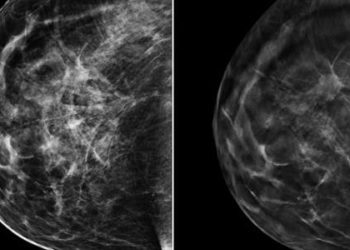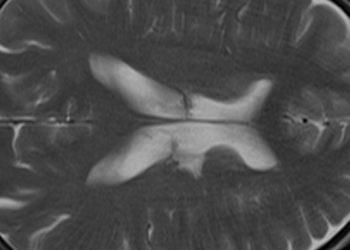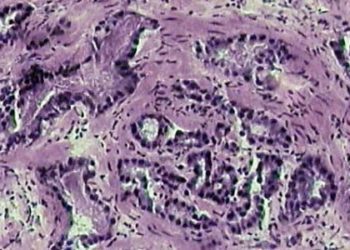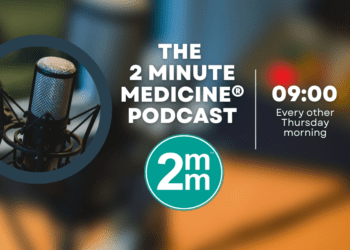Quantitative MRI may differentiate true from pseudoprogression in glioblastoma
1. Contrast-enhanced magnetic resonance (MR) imaging-derived quantitative parameters of tissue permeability, particularly the volume transfer constant (Ktrans), showed moderate sensitivity and high specificity for differentiation of post-treatment glioblastoma progression from pseudoprogression.
Evidence Rating: 3 (Average)
Study Rundown: An aggressive brain tumor with a poor prognosis, glioblastoma multiforme, is typically treated with a combination of surgical resection, chemotherapy, and external beam radiation. Despite multimodal therapy, these tumors frequently recur or progress and must be carefully followed with diagnostic imaging to guide decisions regarding their course of management. Contrast-enhanced MR imaging is currently the standard of care for tumor surveillance, but its performance is limited by post-treatment changes to the tumor bed. Specifically, increased MR contrast enhancement may be due either to true tumor progression or to benign, treatment-related inflammation, a phenomenon termed pseudoprogression. Features previously suggested to indicate true progression include a reduced apparent diffusion coefficient, increased cerebral blood volume, and a subependymal enhancement pattern, but none of these findings alone is sufficiently sensitive or specific to confidently register a diagnosis.
The current study sought to expand upon the available techniques used to identify true progression by utilizing calculated pharmacokinetic parameters of tissue permeability derived from contrast-enhanced MR-images. Among patients with treated glioblastoma, one pharmacokinetic value, the volume transfer coefficient (Ktrans), was found to be highly specific and moderately sensitive for true progression when increased. This finding was theorized to represent the increased neoplastic vascular burden or increased blood-brain permeability in the tumor bed among patients with progression of their disease. The study was limited by a small sample size and the lack of a comparison to standard imaging modalities used for the evaluation of tumor progression. Further studies incorporating traditional MR and diffusion-weighted imaging are warranted to examine the cumulative predictive effect.
Click to read the study in Radiology
Relevant reading: Clinical features, mechanisms, and management of pseudoprogression in malignant gliomas
In-Depth [prospective cohort]: Thirty-three patients with pathology-proven glioblastoma multiforme and new enhancing lesions within the tumor bed following surgical resection, external beam radiation, and temozolomide chemotherapy were examined using contrast-enhanced MRI with quantitative perfusion analysis. Using this technique, pharmacokinetic parameters such as Ktrans (volume transfer constant), ve (extravascular extracellular space) and vp (plasma blood volume per unit volume of tissue) were calculated for each patient. The presence or absence of true disease progression was determined by the Response Assessment in Neuro-Oncology (RANO) criteria, which specify a set of contrast-enhanced imaging findings that define true progression and pseudoprogression 12 weeks following completion of glioblastoma treatment. Quantitative MR imaging parameters were then compared to the RANO reference standard to determine the diagnostic performance of quantitative MR imaging in the diagnosis of true progression. Mean Ktrans was significantly elevated in the 17 patients exhibiting true progression versus the psuedoprogression group (P = 0.004), and mean ve was also significantly elevated in the true progression group (P = 0.034). Mean vp did not differ between the two groups (P > 0.05). Of these values, only an elevation of mean Ktrans beyond a threshold value of 0.347 min-1 was strongly predictive of tumor progression, with a sensitivity of 59% and a specificity of 94%.
More from this author: MR lymphangiography useful for evaluation of central lymphatic pathology, MRI may predict progression to early dementia in healthy elderly adults, Preoperative MRI improves surgical outcomes in robotic prostatectomy.
Image: PD
©2012-2014 2minutemedicine.com. All rights reserved. No works may be reproduced without expressed written consent from 2minutemedicine.com. Disclaimer: We present factual information directly from peer reviewed medical journals. No post should be construed as medical advice and is not intended as such by the authors, editors, staff or by 2minutemedicine.com. PLEASE SEE A HEALTHCARE PROVIDER IN YOUR AREA IF YOU SEEK MEDICAL ADVICE OF ANY SORT.






